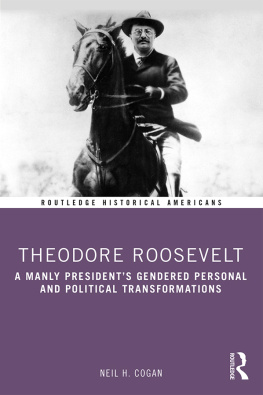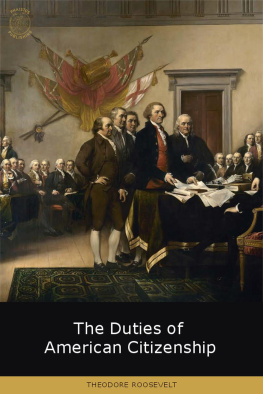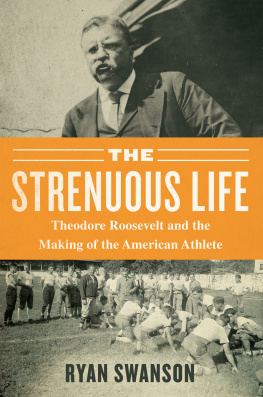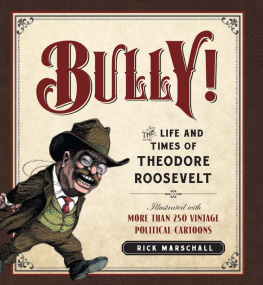

Table of Contents
For
Tony, Barbara, and Peter
with gratitude and love
Acclaim for Kathleen Daltons THEODORE ROOSEVELT
Delivers insight not found elsewhere.... The best explanation of Roosevelts moralism, and the most thorough account of how it informed his politics. H. W. Brands, The Boston Globe
A fresh look at TR.... More than any other president, he embodied the virtues of energy, vitality and self-improvement. The Washington Post
The best one-volume biography of Theodore Roosevelt.... [Daltons] stunning portrayal presents a realistic and balanced view that challenges traditional interpretations. Library Journal
At a time when we yearn for great moral leadership and conviction, Kathleen Dalton brings back to us a man who marvelously embraced these qualities, in a continually dramatic account told with skill and grace. James MacGregor Burns, author of The Three Roosevelts and Roosevelt: The Lion and the Fox
Evenhanded.... Fresh and readable. Fort Worth Star-Telegram
Finds new points to make about... the prophet of the Progressive Era and the pioneer of the modern presidency. The Baltimore Sun
Theodore Roosevelt seizes center stage at the beginning of this vivid new biography... but Kathleen Dalton has managed without ever taking the spotlight off him to reveal a great deal about the country he sought to lead. Geoffrey C. Ward, author of A First-Class Temperament: The Emergence of Franklin Roosevelt
Dalton admirably capture[s] the vitality, insatiable curiosity, and passion that made Roosevelt such a compelling figure. Booklist
Introduction
THEODORE ROOSEVELT has become one of the enduring stock characters of American culture. He is so familiar to us in his aggressive exuberance that when his distinctive spectacles, mustache, and clenched teeth appear before us in a play or television commercial we need merely count the seconds until he utters the predictable Bully! He has so often been parodied that the American Heritage Dictionary uses a cartoon of TR to illustrate the word caricature.1
Roosevelt draws our attention immediately, often leaving a quick impression. We see him personifying reliability in a newspaper ad for a bank or the spirit of boyish fun in a political cartoon. Even without words his image speaks to us.
His evocative power can carry a dollar value. Recognizing that he continues to strike an emotional chord with the public, advertisers have used Roosevelts image to promote the Bible, computer diskettes, baking powder, investment firms, and malt liquor. More than eight decades after his death, the lasting persona of Theodore Roosevelt still can be found in millions of American homes: teddy bears are everywhere. Products sell better when endorsed by his catch phrases, such as good to the last drop Maxwell House coffee. TR theme restaurants serve up standard American cuisine using Rooseveltian sayings and Bull Mooseera decor. These restaurants embody the same insight that the owners of Moxie soda understood at the beginning of the twentieth century. When Moxie wanted a face to represent energy and intestinal fortitude they picked the president with the most moxie.
Americas affection for Theodore Roosevelt has a long history. He evoked a warm response from portions of the populace early in his political career. As a flamboyant New York state legislator and New York City police commissioner he won a devout local following. His national reputation grew further from his writing and his role as a U.S. Civil Service commissioner. As a doughty campaigner in the lively Bryan-McKinley presidential race in 1896, TR pulled in big audiences with a combination of colorful invective and lofty idealism.
Then, in 1898 he exploded into the national consciousness as one of the most touted heroes of the Spanish-American War. His presidency, of course, was the high watermark of his relationship with the American people, a time when the press hung on his every political word as well as his preachments on a great many other subjects. In his day he became the most revered president since Abraham Lincoln.
To many of his contemporaries Roosevelt was the ideal man and statesman, both a president who grappled with modern problems and a charismatic leader who symbolized the peoples highest ideals. As a third-party presidential candidate in 1912, running against the power and tradition of the two-party system, he achieved the impossible. Although he came in second to Democrat Woodrow Wilson, he beat the well-financed Republican incumbent, William Howard Taft, polling the largest percentage of the popular vote ever won by a third-party candidate in U.S. history.
His popularity extended beyond politics, for he was admired as a celebrity who stood for cherished beliefs and as an intellectual who reinterpreted the nations past. From the 1880s he wrote for popular magazines from the LadiesHome Journal to Youths Companion, telling tales of his own adventures and giving advice on how people should conduct their lives. His readers were entertained and instructed by his articles about manly sports, proper family relations, who should go west, and good books to read on safari, all of which made him a highly paid and sought-after writer. When the Boy Scouts looked for the perfect role model to present to their young recruits, Theodore Roosevelt came to mind. Clearly, large segments of the public found him believable as a cultural authority. In 1913, when American Magazine took a poll to find out who was the greatest man in the United States, TR won hands down.2
It is a testimony to his lasting popularity as an engaging national figure that in 1979 another popular magazine, Newsweek, featured him on its cover as a perennial American hero.3 Among modern presidents it is TR who inspires the most active fan club, the Theodore Roosevelt Association. His life provides enough engaging material to inspire Broadway plays and movie scripts, and heavy traffic at historic sites.
But he left a more substantial legacy than mere popularity and entertainment value. Today he is heralded as the architect of the modern presidency, as a world leader who boldly reshaped the office to meet the needs of the new century and redefined Americas place in the world. Theodore Roosevelt is alive and well in our memory, remembered as both an honored political leader and one of the most picturesque personalities who has ever enlivened the landscape.4
When the name of any historical personality slips into everyday usage guaranteeing a knowing and amused response from the publicour vision of that personality is inevitably blurred. Whenever a figure in history has been canonized by generations of hero worshippers, as Roosevelt has been, it becomes harder for scholars to assess the real person beneath the image. His image blocks our view of him. Too often we see TR only as he is on Mount Rushmore, a larger-than-life monument carved in stone, unchanging, far from being flesh and blood, and quite imperturbable.
Yet we know that Theodore Roosevelt the person must be separable from TR the mythic creation of American culture. As a master politician and cultural leader he helped create his own legend, and therefore he provides any biographer with a special challenge. From the start of his political career his presentation of himself was shaped by his awareness of public scrutiny. He became a skilled politician who enjoyed playing to the crowd, shrewdly championing themes that evoked warm responses. His attunement to audience approval often carried over into his writing and private correspondence. His awareness of living his life for public consumption even crept into his relationship with his six children. He wrote them what they called posterity letters, self-conscious missives intended for eventual public exposure. He expected, correctly, that the letters would be published, so he wrote them not only to stay close to his children, but to look good in the judgment of history.
Next page







